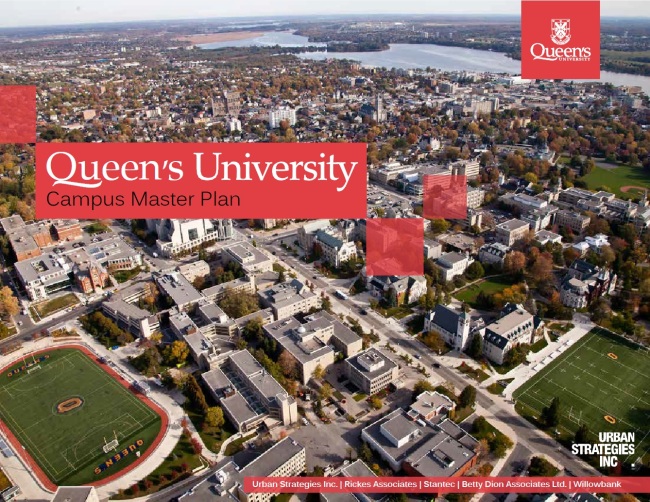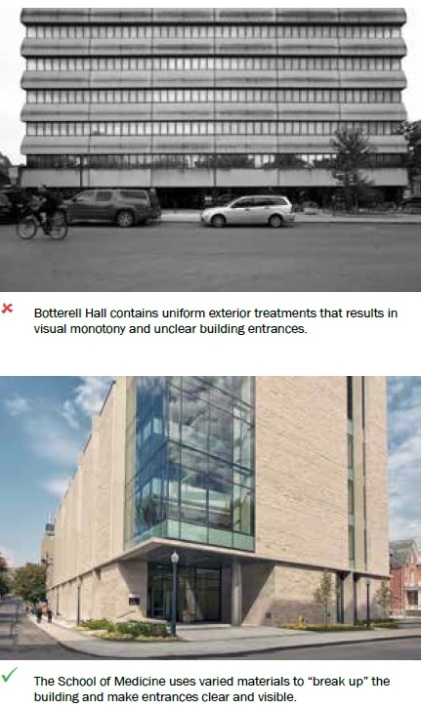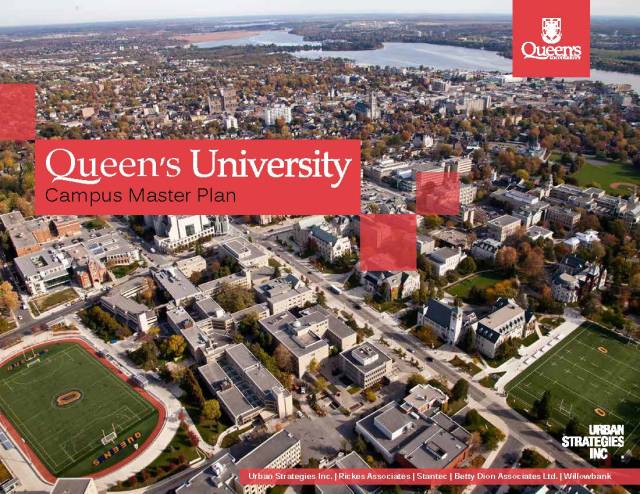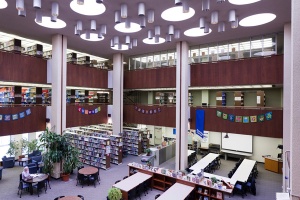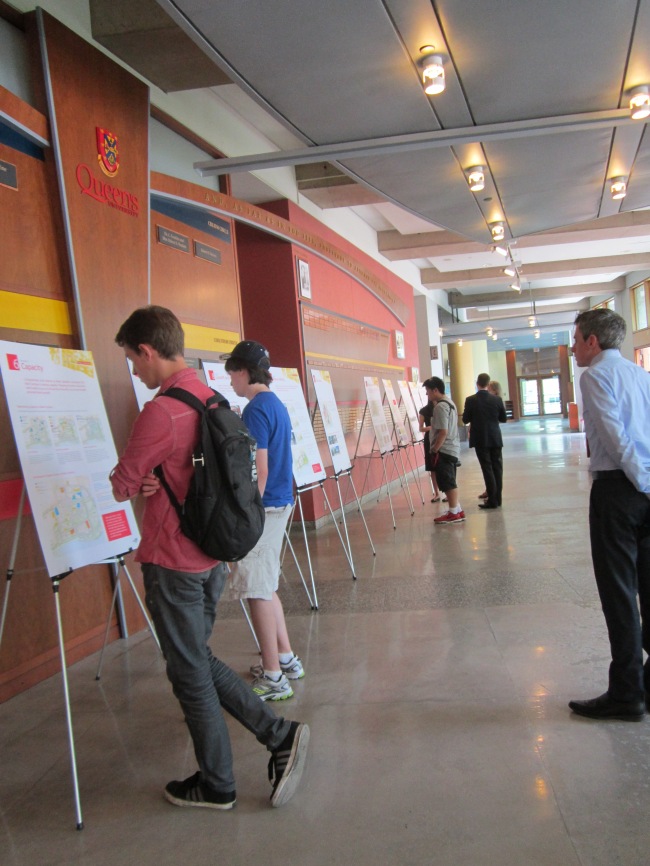Our final guest blog comes from David Gordon, Director of the School of Urban and Regional Planning and a faculty member on the Campus Master Plan Advisory Committee. As a key participant in the evolution of the Queen’s campus over the years, David has provided a great summary of what sets the new CMP apart from the past, and some of its highlights. Thanks to David for providing the last blog post!
***
What’s new about the new Campus Master Plan?
My first involvement in planning the Queen’s campus was as an undergraduate Senator in 1974. We formed a student club called Project Green to replace the campus trees that had been killed by the Dutch Elm disease. Professor Ned Franks recruited me into the university’s Campus Planning and Development Committee (CPDC), where we commissioned landscape plans for parts of the campus to guide the new tree-planting. In those days, a “campus plan” was simply a large map of the university’s land holdings, and Queen’s had not prepared an overall plan since the 1961 drawing described by Tony Gkotsis in his blog post below [1].
After returning to Kingston as a professor of urban planning in 1994, I rejoined the CPDC, and discovered that Queen’s had just completed one of Canada’s first comprehensive campus plans, prepared by du Toit Allsopp Hillier (DTAH). This plan was a black and white report, with design principles and demonstration plans for parts of the campus. It shaped the redevelopment of the main campus, guiding buildings such as Stauffer Library, Biosciences, Goodes Hall, the ILC and the School of Medicine. DTAH paid particular attention to the main campus landscapes – designing the new pedestrian lighting system, Tindall Field, the Medical Quad, University Avenue and Professor’s Walk. They also created a new view to the lake from the front door of Victoria Hall by carefully siting Chernoff Hall. The DTAH campus plan was updated in 2003, but was out of date a decade later. A campus master plan mainly deals with the physical design of the university, and the new Queen’s Academic Plan and Research Plans had to be finished first, since they are more important.
We started work on a new campus plan in 2012, with Urban Strategies Inc. selected as the lead consultant. The Campus Master Plan covers much new ground, including the campus’ connections with its surrounding communities, more attention to the West Campus and detailed implementation guidelines.
The Campus and the City
Most campus plans just deal with the property owned by a university. The new Queen’s Campus Master Plan is different. The Campus at the City Scale looks at the University’s relationship with its surrounding communities. Queen’s now has multiple campuses embedded in Kingston’s urban fabric, so the university must work with the municipal government to connect these facilities and reduce impacts upon the adjacent neighbourhoods. This chapter considers housing, road design, transit, pedestrian and cycling networks.
Better pedestrian and cycling networks will be particularly important in the years ahead and will benefit both the university and the surrounding communities. Students from the School of Urban and Regional Planning have prepared more detailed plans for active transportation in the area.
A Larger Role for West Campus
Previous Queen’s plans have paid little attention to the West Campus, but this oversight has changed. The main campus is nearing capacity and the West Campus presents good opportunities for future growth.
There is much more land available at West Campus, and it is really not that far away from the main campus. Duncan McArthur Hall is about 1600 metres from my office door at Sutherland Hall. I can get there in less than five minutes on my bicycle, or a 15-minute walk – less than the distance across campus at Waterloo, Western and other large Canadian universities. The psychological separation is perhaps larger than the physical separation, and must be addressed by better quality walking, cycling and transit connections.
The new West Campus Master Plan focuses on making the area a 24-hour, mixed-use precinct, with academic use, having athletics and better community facilities. The West Campus plan is as detailed as the main campus, identifying new open spaces, development sites and movement systems. For example, the proposed West Campus Square shown below could include community uses, a transit hub and upper-year housing.

Proposed West Campus Square at Sir John A. Macdonald Boulevard and Union Street. McArthur Hall is at the right and the former Prison for Women at the left
Guidelines for the Future
The new plan is both a vision statement and a working tool to guide changes. As an urban planner, I particularly appreciate the Campus Master Plan’s design guidelines (Ch. 7) and precinct plans. For example, the Stuart Precinct’s plan proposes Chown Walk – a connection past the University Club to the lake that might complement the similar view from Victoria Hall.

Stuart Street Precinct plan, showing the proposed Chown Hall Walk to the lake and the walkway and lake view from Victoria Hall created by the 2002 Campus Master Plan
Ideas like these are why we hire first-rate urban design firms to advise the university. A fresh set of highly-skilled eyes can often see things that are not yet present.
These implementation sections will provide detailed guidance for the new Campus Planning Advisory Committee and Queen’s University Planning Committee. The design guidelines are heavily illustrated with images of what to do (i.e. the School of Medicine) and what not to do (Botterell Hall, for example).
Finally, I encourage everyone to browse through the Campus Master Plan, simply because it is an attractive document. The plan is filled with gorgeous images of the current campus, good examples from other universities and computer simulations of what Queen’s might look like in the future.
Queen’s has a beautiful campus. There is every reason to believe that if we plan for the future, our campus can continue to be a benefit for its students, staff, faculty and the surrounding communities.
[1] However, Queen’s had a distinguished architect and urban designer, Eric Thrift, in charge of siting new buildings as the University Campus Planner and advisor to CPDC. Thrift’s office was right beside Dr. Bernard Trotter, who headed the Academic Planning office and advised the Senate Committee on Academic Development. CPDC and SCAD members would meet together annually. That’s how academic planning and campus planning were co-ordinated when the university was much smaller and less participatory.
***
David Gordon is an urban designer and Director of the School of Urban and Regional Planning. He was a Senate representative on the Campus Planning and Development Committee for over twenty years, and a member of the recent Campus Master Plan Advisory Committee.

